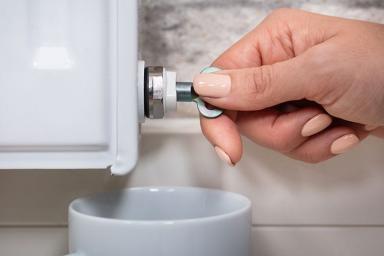How to bleed a radiator, balance a radiator and other radiator problems solved

Bleeding radiators, balancing radiators, radiator not getting hot and when to repair or replace.
You can experience all sorts of problems with radiators: one radiator is not working; radiators are cold at the bottom, a radiator is leaking or none of the radiators are working. Such problems do not necessarily mean they need to replaced or indeed there is a problem with the radiator itself. To understand common radiator problems it is useful to understand how radiators work.
Radiators are ‘wet’ heating systems, i.e. they are filled with water that has been heated by the boiler and circulated around the system. Heated water ‘flows’ from the boiler and then ‘returns’ back to it (hence system pipework is referred to a ‘flow’ and return’). Water and metal need to be prevented from reacting to each other to prevent problems. In this guide we give you expert advice on common radiator problems and solutions. We talk you through the likely causes and advise on repair or replacement.
One radiator is not working
This is a common fault with two very common causes:
- There is an airlock in the radiator and the radiator requires bleeding.
- The water in the system is not circulating and the radiators require balancing
How to bleed a radiator
‘Bleeding’ a radiator means releasing trapped air in the radiator. This is done by pressing in a small valve at the top of the radiator, located at one end, with a ‘radiator key’ and holding in until all of the air has been released. NB your radiators may have a decorative grill and side panels which will cover the valve. You will need to lift the grill and side panels off first.
How to balance a radiator
When water does not flow around the whole system then the radiators will need balancing. Water will always take the easiest route and often this means it will skip out radiators and travel back to source without heating them.
To encourage water to flow fully around the system, it necessary to restrict the path through the easiest course. This is done by tightening the ‘lock shields’ (valves) and restricting the flow to the ‘easy to reach’ radiators. Balancing radiators is a specialist skill that will usually require the help of an experienced plumber or heating engineer.
Radiators that are cold at the bottom
Radiators that are cold at the bottom is a sign that a system is heavily affected by rust or ‘sludge’
System water will corrode pipes and radiators unless a chemical ‘inhibitor’ has been added. Over time rust collects in small piles at the bottom of the radiators leaving these areas cold.
It is likely that pipes are also heavily affected. The only solution is ‘powerflush’ the system.
Leaking radiators
Most new radiators will come with a 10-20 year warranty. Many 25-40 year old radiators are still going strong. Never the less, some will eventually spring a leak. It is important to establish whether the valve is leaking or the radiators itself. The valve can be replaced. If the leak is coming from the fabric of the radiator then it will require replacement.
None of my radiators are working
This is mostly likely to be a problem with the boiler or the system pump. You may still be able to get hot water however. You will need to call a boiler repair engineer out to diagnose and repair.
Occasionally it can be a total blockage close to the boiler, but this is pretty rare.
More reads...
Guide to thermostatic radiator valves
Lots of help with thermostatic radiator valves in our comprehensive guide.
Guide to powerflushing and cleaning
A clean system is very important for comfort and efficiency. We guide you on cleaning methods.

